| Monday, 3 December, 2001,
15:14 GMT
Firms admit $4bn Enron exposure

Even before Enron filed for Chapter 11 bankruptcy on
Sunday, its business partners were totting up their exposure to the former
energy giant.
|
Major exposure reported so far
|
JP Morgan: $900m
Citigroup: up to $800m
Credit Lyonnais: $250m
Bank of Tokyo-Mitsubishi: $248m (30.6bn yen)
Chubb Corp: $220m
Canadian Imperial Bank: $215m
Sumitomo Mitsui Banking Corp: $210m
Nikko Cordial: $207m (25.5bn yen)
Principal Financial Group: $171m
Abbey National: $164m (£115m)
National Australia Bank: $104m (Aus$200m)
Duke Energy Corp: $100m
Williams Cos: less than $100m
ING: $95m
Commonwealth Bank of Australia: $78m (Aus$150m)
Dynegy: $75m
Mirant: up to $60m
ANZ: $69m
Bear Stearns: $69m
Westpac: $51m
American Electric Power: up to $50m
El Paso: up to $50m
AEP: $50m
Aquila: $50m
Sanwa Bank: $44m
Centrica: $43m
ONEOK: $40m
Mitsubishi Trust & Banking: $39m (4.8bn yen)
TotalFinaElf: $25m
Atmos Energy Corp: $13m
Dominion Resources: $11m
PPL Corp: less than $10m
Exelon: less than $10m
Northern Border Ptners: $9m
Pacific Gas & Electric Corp's National Energy Group: $8m
RWE AG: $8m
Sony Bank: $3m
|
Already a group of banks and
trading partners have admitted to exposure of more than $4bn (£2.8bn) to
the stricken energy giant.
That figure could even rise as Enron's finances
fall under greater scrutiny.
The list includes the firms that traded in
commodity and other markets with Enron, as well as the banks that lent
money to the company.
Undisclosed exposure
In addition to the many companies that have
admitted to exposure to are others that are suspected of having an
exposure to Enron.
For example, Royal Bank of Scotland is believed
to be among Enron's creditors, but it has declined to comment on the
issue.
A UK Sunday newspaper reported that the bank has
an exposure of about £600m, partly secured against Enron's assets.
Sources have also said that Barclays Bank has an
exposure of just under £300m, but the bank made no mention of this in a
trading statement on Monday.
"If there was a material exposure and a likely
loss which could be 4-5% of profit... then they would have had to put it
there today," said Tom Rayner, banking analyst at Dresdner Kleinwort
Benson.
|
Unconfirmed exposure
|
Royal Bank of Scotland: $855m (£600m)
Aegon: $300m
Barclays Bank: less than $428m (£300m)
ABN Amro: $99m
BP: about $20m
|
In addition, ABN Amro could be making provisions
against 110m euros ($98.5m) it has lent, according to industry sources.
It could be months or even years before the true
size of Enron-related liabilities is revealed, as the sheer complexity of
its dealing makes it tricky for auditors to get a grasp of the situation.
US banking worries
Inevitably, the biggest exposures admitted so far
come from the US banking sector.
Citigroup and JP Morgan reportedly have combined
exposure of up to $1.7bn, although about half of that is secured on
Enron's assets.
But
India's banks have also suffered
after lending to a $2.9bn power project run by Enron's
65%-owned subsidiary, Dabhol Power.
Indian banks and financial institutions, which
also include state-owned Canara Bank and IFCI, have lent or guaranteed
loans totalling $1.4bn to Dabhol.
International members of the lending syndicate,
including ABN Amro, bring
the total lent up to $3bn.
Indian banking shares fell on Monday. In
afternoon trade, state-run Industrial Development Bank of India shed
nearly 5%, while State Bank of India was down 2.6%.
Bondholders
Banks that hold Enron bonds have also been hit
after they were downgraded to "junk" status last week.
More recently, Japan's Nikko Cordial, which had
over $200m in Enron bonds, saw its own ratings put under threat.
On Monday, the ratings agency Standard & Poor's
placed some of Nikko's ratings on creditwatch with negative implications
after investors.
The ratings action came after panicked investors
in funds sold by Nikko cashed in their holdings.
Overall, the collapse of
Enron could cost four Japanese
financial institutions that held Enron bonds about $8bn.
In addition to Nikko, these are UFJ Partners,
Japan Investment Trust Management and Sumisei Global Investment Trust
Management.
Trading ties
Some of this banking money may well be recovered.
Secured bond and loan creditors get high priority
when a company goes bankrupt.
Less clear, however, is the situation on the
energy markets, which have become hugely sophisticated in recent years,
largely thanks to Enron's aggressive financial wizardry.
Enron was a market maker in a large number of
countries, signing highly complicated, high value transactions many years
into the future.
Although the company claims not to have defaulted
on any of these deals so far, market participants are worried that it
might if things become worse.
Enron_liabilities
|
|
|
|
PERIOD ENDING |
31-Dec-00 |
31-Dec-99 |
31-Dec-98 |
|
|
|
Assets |
| Current Assets |
|
|
Cash And Cash Equivalents |
3,807,000 |
288,000 |
111,000 |
|
|
Short Term Investments |
- |
- |
- |
|
|
Net Receivables |
12,270,000 |
3,548,000 |
2,893,000 |
|
|
Inventory |
953,000 |
598,000 |
514,000 |
|
|
Other Current Assets |
13,351,000 |
2,821,000 |
2,415,000 |
|
|
|
Total
Current Assets |
30,381,000 |
7,255,000 |
5,933,000 |
| Long Term
Investments |
5,294,000 |
5,036,000 |
4,433,000 |
| Property Plant
and Equipment |
11,743,000 |
10,681,000 |
10,657,000 |
| Goodwill |
3,638,000 |
2,799,000 |
1,949,000 |
| Intangible
Assets |
- |
- |
- |
| Accumulated
Amortization |
- |
- |
- |
| Other Assets |
14,447,000 |
7,610,000 |
6,378,000 |
| Deferred Long
Term Asset Charges |
- |
- |
- |
|
|
|
Total
Assets |
65,503,000 |
33,381,000 |
29,350,000 |
|
|
|
Liabilities |
| Current
Liabilities |
|
|
Accounts Payable |
9,777,000 |
2,154,000 |
2,380,000 |
|
|
Short/Current Long Term Debt |
1,679,000 |
1,001,000 |
- |
|
|
Other Current Liabilities |
16,950,000 |
3,604,000 |
3,727,000 |
|
|
|
Total Current Liabilities |
28,406,000 |
6,759,000 |
6,107,000 |
| Long Term Debt |
8,550,000 |
7,151,000 |
7,357,000 |
| Other
Liabilities |
12,115,000 |
4,577,000 |
3,337,000 |
| Deferred Long Term
Liability Charges |
1,644,000 |
1,894,000 |
2,357,000 |
| Minority Interest |
3,318,000 |
2,430,000 |
2,143,000 |
| Negative Goodwill |
- |
- |
- |
|
|
|
Total
Liabilities |
54,033,000 |
22,811,000 |
22,302,000 |
|
|
|
Stockholders' Equity |
| Misc Stocks
Options Warrants |
- |
- |
1,001,000 |
| Redeemable
Preferred Stock |
1,000,000 |
1,000,000 |
- |
| Preferred
Stock |
124,000 |
1,130,000 |
132,000 |
| Common Stock |
8,348,000 |
6,637,000 |
5,117,000 |
| Retained
Earnings |
3,226,000 |
2,698,000 |
2,226,000 |
| Treasury
Stock |
(32,000) |
(49,000) |
(195,000) |
| Capital
Surplus |
- |
- |
- |
| Other
Stockholder Equity |
(1,196,000) |
(846,000) |
(232,000) |
|
|
|
Total
Stockholder Equity |
10,470,000 |
9,570,000 |
7,048,000 |
|
|
| Net Tangible
Assets |
$6,832,000 |
$6,771,000 |
$5,099,000 |
|
|
|
Enron_Market_cap
|
COMPANY
|
VALUE AT
PEAK
|
VALUE TODAY
|
DIFFERENCE
( loss in
billions)
|
|
CISCO
SYSTEMS
|
$502,899,081,250
|
$148,238,329,000
|
$355 b
|
|
INTEL
|
$500,883,000,000
|
$231,899,600,000
|
$269 b
|
|
GENERAL
ELECTRIC
|
$595,968,600,000
|
$379,730,944,000
|
$216 b
|
|
YAHOO!
|
$135,280,000,000
|
$11,483,136,000
|
$124 b
|
|
ENRON
|
$66,951,000,000
|
$498,413,000
|
$66 b
|
|
DISNEY
|
$88,296,862,500
|
$44,584,182,000
|
$44 b
|
|
Chart by Sentry Over America. Data from
Zachs, BigCharts, and annual reports
|
 |
Lay was born into a poor family in Tyrone,
Missouri. His father was a Baptist preacher and some-time tractor
salesman. He has been described by his undergraduate classmates at the
University of Missouri as industrious and high-minded, and served as
president of the Zeta Phi chapter of the Beta Theta Pi fraternity at the
University of Missouri and got his doctorate in economics at University of
Houston in 1970.
Lay worked in the early
‘70s as a federal energy regulator.
By the Reagan administration, when
energy was deregulated, Lay was already an energy company executive
and he took advantage of the new climate by merging
Houston Natural Gas Co. with Nebraska-based Inter-North.
Lay was one of America's best-paid CEOs, earning (for example) a $42.4
million compensation package in 1999.[1] Lay sold large amounts of his
Enron stock in September and October of 2001 as its price fell, while
encouraging employees to buy more stock, telling them the company would
rebound. Lay liquidated more than $300 million in Enron stock from 1989 to
2001, mostly in stock options.
|
Lay maintained business and political ties to
Republican goverment officials, hiring (for example) James Baker and Robert
Mosbacher as they left the Cabinet of President George H. W. Bush (both men
lobbied for Enron contracts in the wake of the First Gulf War). Lay was a
supporter of Bush for Governor of Texas; in 1999, Bush signed a law deregulating
Texas electric markets.[2] A Bush 'Pioneer,' Lay became one of the largest
individual contributors to the Bush-Cheney 2000 presidential campaign: his
donation history shows $651,760 to Republicans, $61,960 to Democrats, and
$62,150 to special interests.[3] Lay served on the Bush-Cheney Transition
Advisory Committee, and, according to Kurt Eichenwald's book Conspiracy of
Fools, was nearly selected to be Secretary of the Treasury following Bush's
victory in the 2000 U.S. presidential election. Ultimately Paul O'Neill was
chosen for the position instead.
.Fastow
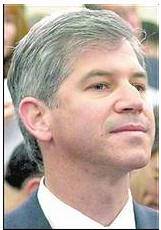 |
Andrew Stuart Fastow (born 22
December 1961) was the chief financial officer of Enron Corporation
until the U.S. Securities and Exchange Commission opened an investigation
into his conduct in 2001. Fastow was one of the
key figures behind the complex web
of off-balance sheet special purpose entities
(limited partnerships which Enron controlled) used to conceal their
massive losses.
Fastow was born in Washington, DC, the middle child of three sons.
His father worked in merchandising for a drug store chain. He grew up in
New Providence, New Jersey, where he was student council president and on
the tennis team and in the school band during high school. He was the sole
student representative on the New Jersey State Board of Education.
|
Fastow graduated from Tufts University in 1983 with
B.A.s in economics and Chinese. While there, he met his
future wife, Lea Weingarten,
whom he married in 1984. Her family had founded a grocery store chain in Houston
and later entered the real estate business.
Fastow
and Weingarten both earned MBAs at Northwestern University and worked for
Continental Illinois National Bank and Trust Company in Chicago. While there, he
helped pioneer a system of raising capital by selling notes backed by risky
loans. The practice spread across the industry "because it provides an obvious
advantage for a bank," noted the Chicago Tribune. "It moves assets off the
bank's balance sheet while creating revenue." Continental became the largest
U.S. bank to fail during the Savings and Loan crisis. Based on his work at
Continental, Fastow was hired in 1990 by Jeffrey Skilling at Enron.
On October 31, 2002, Fastow was indicted by a federal grand jury in Houston,
Texas on 78 counts including fraud, money laundering, and conspiracy. On January
14, 2004, he pled guilty to two counts of wire and securities fraud, and agreed
to serve a ten-year prison sentence. He also agreed to cooperate with federal
authorities in the prosecutions of other former Enron executives. Fastow,
although convicted, remains out of prison until completion of the investigation.
On May 6, 2004, his wife, Lea
Fastow,
a former Enron assistant treasurer,
pled guilty to a misdemeanor tax charge and was sentenced to one year in
a federal prison in Houston, and an additional year of supervised release. She
was released to a halfway house on 11 July 2005.
The practice spread across the industry "because it provides an obvious
advantage for a bank," noted the
Chicago Tribune. "It moves assets off the bank's balance sheet
while creating revenue."
Continental became the largest U.S. bank to
fail
during the
Savings and Loan crisis. Based
on his work at Continental, Fastow
was hired in 1990 by
Jeffrey Skilling
at Enron.
He also agreed to cooperate with federal authorities in the
prosecutions of other former Enron executives. Fastow, although convicted,
remains out of prison until
completion of the investigation.
On May 6,
2004, his wife,
Lea
Fastow, a former
Enron
assistant treasurer, pled guilty to a
misdemeanor tax charge and was sentenced to
one year in a
federal prison in Houston, and an additional year of supervised
release. She was released to a
halfway house on
11 July
2005.
The company's Chapter 11 filing leaves banks, pension plans and other
lenders with at least $5 billion at risk. More than 4,000 Enron employees
have lost their jobs and 401(k) savings. The collapse is still
reverberating in the stock market, which has dropped some $200 billion in
value since Enron's Dec. 2 filing, amid fears that other Enrons are
lurking out there.
Fastow and at least six others involved in his financial gaming, all
with jobs or spouses at Enron, made at least $42
So beginning in 1993, Fastow
created hundreds of "special-purpose entities"
designed to transfer
Enron's debt to an outside company and get it off the books--without
giving up control of the assets that stood behind the debt
Web Exclusive| Business & Technology
How Fastow Helped Enron Fall
Page 2 of 3 <<Previous 1
| 2 |
3 Next
>>
In the hallways, colleagues respected and even feared Fastow's
power--but not his presence. A former executive says he was never sure
what Fastow was thinking other than how a particular project would affect
his career. But, in the words of another former Enron manager, "he was
Skilling's fair-haired boy."
Fastow is married to a woman he met at Tufts, Lea Weingarten, whose
family built a supermarket and real estate empire based in Houston. They
were not social climbers, for good reason. "Lea is from an old Houston
family," says Marti Mayo, executive director of the Contemporary Arts
Museum. "She didn't need to move anywhere. She was there." For most of the
Roaring Nineties, the Fastows did not play the power couple; instead they
lived like other professionals in the West University area and raised two
children. They worked together at Enron's finance divisions in the early
'90s, before Lea left to focus on the kids. They were just beginning to
live rich--they are building a $1.3 million home in the city's old-money
River Oaks section--and he tooled around town in a Porsche 911.
Their passion is modern art, and they donated $25,000 to the Menil
Collection, one of the city's contemporary-art museums. They were
accumulating edgy contemporary art--not just for themselves but also for
Enron's new 40-story Cesar Pelli skyscraper. Lea took charge of the firm's
art purchases, which included sculptures by Claes Oldenburg and Martin
Puryear. The Fastows had plans to be big givers; they channeled $4.5
million, reaped from a $25,000 investment in one of his deals, to the
Fastow Family Foundation.
Friends and acquaintances saw Fastow as a low-key family man. Attorney
Robert Lapin, who has known him for a dozen years, calls him "modest,
unassuming, not at all self-aggrandizing." At his temple, Congregation Or
Ami, Fastow spent time helping shape some of the congregation's education
programs along nontraditional lines. Says Rabbi Shaul Osadchey: "He was
one of those people who could think outside the box."
That may be why Skilling
hired him in 1990 from Continental Illinois, a Chicago thrift that
failed in the mid-'80s savings-and-loan bust. Fastow had a skill Skilling
needed; he did asset "securitization," a means for banks to sell off risk
in the form of securities backed by mortgages or other obligations.
 |
As a consultant for McKinsey & Company,
Skilling
worked with Enron in 1987, helping the
company create a forward market in natural gas. Skilling impressed Kenneth
Lay in his capacity as a consultant, and was hired by Lay in
1990 as chairman and chief
executive officer of Enron Finance Corp. In
1991, he became the chairman of Enron Gas Services Co., which was a result
of the merger of Enron Gas Marketing and Enron Finance Corp. Skilling was
named CEO/managing director of Enron Capital & Trade Resources, which was
the subsidiary responsible for
energy trading and marketing.
He was promoted to president and chief operating officer (Second only to
Lay) of Enron in 1997, while remaining the head of Enron Capital & Trade
Resources. In 1999, Enron launched EnronOnline, an Internet-based trading
operation, which was used by virtually every energy company in the U.S.
|
On February 12, 2001, Skilling was
named CEO of Enron. Skilling began to behave
strangely during this time and in April 2001 verbally attacked Wall Street
analyst Richard Grubman[1], who questioned Enron's unusual accounting practice
during a recorded conference call. When Grubman complained that Enron was the
only company that could not release a balance sheet along with its earnings
statements, Skilling replied "Well, thank you very much, we appreciate that...
asshole." Though the comment was met with dismay and astonishment by press and
public, it became an inside joke among many Enron employees, mocking Grubman for
his perceived meddling rather than Skilling's lack of tact.[citation needed]
Skilling unexpectedly resigned on August 14 of that year, citing personal
reasons, and he soon sold large blocks of his shares in the
corporation.[citation needed] Then Enron Chairman Kenneth Lay, who previously
served as CEO for 15 years, replaced him until the company declared bankruptcy
in December of 2001. When brought
in front of congressional committees, he stated that he had "no knowledge" of
the complicated chain of scandal that would eventually result in Enron's
bankruptcy.[citation
needed]
On March 28, 2001, PBS's Frontline interviewed Skilling, he claimed Enron was
one of "the good guys". [5]
Directors
- Pamela M. Tittle, Plaintiff No. 2, and Plaintiff
No. 3, on behalf of themselves and a class of persons similarly
situated,
Plaintiffs,
vs.
Enron Corp., an
Oregon corporation; Mary K. Joyce; Robert A.
Belfer, Norman P.
Blake, Ronnie C. Cohen, John H. Duncan, Wendy L.
Gramm, Ken L. Harrison;
Robert K. Jaedicke,
Kenneth L. Lay, Charles A. LeMaistre, Jeffrey K. Skilling, John A.
Urquhart, John Wakeman,
Herbert S. Winokur, John Mendelsohn,
Jerome J.
Meyer,
Rebecca Mark-Jusbasche,
Paulo V. Ferraz Pereira, and Frank Savage, individually and as
constituting the Board of Directors of Enron Corp.; James S. Prentice;
and John and Jane Does 2-20,
Defendants.
|
|
| |
|
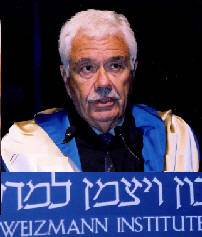 |
Robert Belfer
He owned 17.02% of the preferred Convertible Stock. Owns Belco
Oil
|
| |
|
|
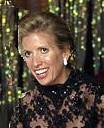
|
REBECCA MARK-JUSBASCHE
----The $82
Million Woman
A Harvard Jewess had shot into prominence in 1991 when she persuaded Mr
Kenneth L. Lay, till recently Enron's Chairman and CEO, to set up Enron
Development Corporation to pursue overseas projects under her leadership.
E
On the widely published lists of high-ranking executives who made
millions cashing out stock options, she's the first female name to show
up; according to a court filing, she received $82.5 million from the sale
of stock.
|
| |
|
|
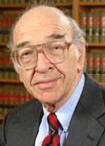
|
RUBEN, LAWRENCE, JR.,
Owned 22% of the convertible preferred stock
|
| |
|
|
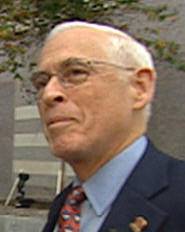 |
Mendelsohn
Director since 1999 Since July, 1996, Dr. Mendelsohn has served as
President of the University of Texas M.D.
|
| |
|
 |
Bitsy and R. Sol Causey
Head accountant |
|
| |
|
|
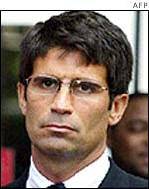
|
Micky Kopper
Fastow aide Michael Kopper pleaded
guilty in July. He is under surveillance so he doesn't skip to Israel
|
| |
timothy Belden |
| |
Jewish
brokers at Merril Lynch
Robert
Furst
,Daniel Bayly,
and James Brown-- received a similar
sentence by
co-defendants and former Merrill executives, .
|
| |
|
|

|
Lays wife could
be Jewish
ALTHOUGH the maiden name of
Linda Lay is not known (she is the wife of Ken Lay, CEO of
Enron
-- the most costly scandal since WTC, and Actualité juive insists
that neither she nor her husband is Jewish, she was the yearly biggest
donor of the Houston Holocaust Museum.
Enron and the Lays were patrons
of Houston's Jewish causes
|
Top Trader for Enron Admits To Fraud
in California Crisis
By REBECCA SMITH
and JOHN R. WILKE
Staff Reporters
of THE WALL STREET JOURNAL
The former head of Enron Corp.'s Western
energy-trading desk admitted he conspired to manipulate California's electricity
market and extract illegal profits for his employer, giving federal prosecutors
a valuable witness who will help them develop cases against executives at Enron
and other big energy-trading companies.
Timothy Norris Belden,
35 years old, pleaded guilty to a single count of wire fraud.
He told U.S. District Judge Martin Jenkins in San Francisco that he helped
devise "schemes" to manipulate the California wholesale-electricity market from
when it was first deregulated in 1998 until Enron's collapse in December 2001,
"because I was trying to maximize profit for Enron." In doing so, he said he
deliberately submitted false data to the state's electric-grid operator and to
the organization that ran the daily power auction. The meltdown of California's
power market in 2000 and 2001 and its cleanup could end up costing the state's
consumers $80 billion or more.
Prosecutors say that Mr. Belden, who has
agreed to cooperate, can potentially provide them with a road map on how big
energy firms sought to extract illicit profits from the California market, as
well as to clarify the role allegedly played by top Enron executives in
executing the strategy. Among them: former head of Enron trading
Greg Whalley,
who briefly served as Enron's president before the firm sought bankruptcy
protection in late 2001, and Enron's former chief executive, Jeffrey Skilling,
who denied before Congress that Enron had sought to manipulate California's
energy market.
In Washington, Deputy Attorney General
Larry Thompson called Mr. Belden "a central actor" in the trading operations
that produced most of Enron's profits after 1998, and stressed that the
government's probe into that area "is active and ongoing." Until now, the
government's criminal investigation has largely been focused on Enron's use of
off-balance-sheet partnerships to illegally bolster profit and hide debt. That
investigation has resulted so far in a plea arrangement by former Enron Managing
Director Michael Kopper
and a criminal complaint alleging fraud against Enron's former chief financial
officer, Andrew Fastow.
Houston-Jews
Houston
Jews
Quaking Over
Enron
Scandal
|
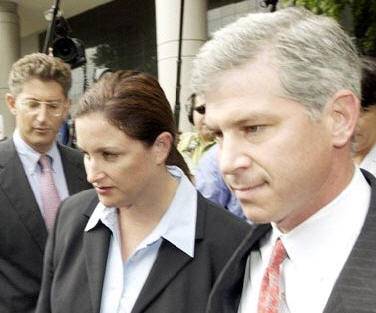 |
Biz Wiz Andrew
Fastow Enlists Chief Character Witness: His Rabbi
By RACHEL
DONADIO
FORWARD
STAFF
For most,
the unfolding
Enron
scandal is a tangle of corporate deception, of private partnerships with
names like Raptor and Jedi, of hidden losses, dizzyingly complex
tax-evasion schemes and tense congressional hearings.
For members of Houston's Jewish
community, however, the scandal is something more: a potential
public-relations nightmare. At its center is Andrew Fastow, Enron's chief
financial officer and an active member of the fast-growing, upwardly
mobile community.
|
Publicly, community members go out
of their way to dismiss concerns that Mr. Fastow's religion is part of the
story. "I don't think it is an issue," said Lee Wunsch, executive vice
president of the Jewish Federation of Greater Houston.
Even so, Houston dinner tables are
buzzing with talk. Some Houston Jews say Mr. Fastow is being singled out for
blame even more than former Enron chairman Kenneth Lay and CEO Jeffrey
Skilling. Others see Mr.
Fastow's prominence at Enron as a sign of just how far Jews have come in an
oil town where memories of anti-Jewish discrimination are still fresh.Yet
even as some
Jews
voice concern that the media is focusing unnecessarily on Mr.
Fastow's
Judaism, it appears that Mr.
Fastow himself has been playing
the religion card by directing calls to his rabbi, who has vouched for his
moral character.
Despite
Jewish worries, press and Internet discussions about the scandal have not
taken on an anti-Semitic tone, Jewish officials say. The Houston
Anti-Defamation League says it is monitoring the media and Web sites of former
Enron
employees for signs of anti-Semitic slurs and has found nothing. The press has
"commented on how he's Jewish, on his Jewish communal activities, but nothing
that's been pejorative," said the
ADL's
Southwest regional director, Martin
Cominsky.
Barbara Friedman,
a lifelong member of the Houston Jewish community who is active in local
politics, also said she hasn't encountered any anti-Semitic sentiment. "If
anything, my reaction has surprised me," Ms. Friedman said.
Mr.
Fastow,
40, is best known in Houston Jewish circles through his wife, Lea Weingarten,
who hails from a prominent and well-respected philanthropic family. She is an
heiress to its grocery store and commercial real estate fortune.
The couple
met at Tufts University, where Mr.
Fastow
studied economics and Chinese. They both worked at a Chicago bank in the
1980s, where Mr. Fastow
went to Northwestern University's Kellogg Business School. They moved to
Houston in 1990 when Mr. Fastow
joined
Enron.
Ms.
Weingarten also worked at
Enron
but left in 1997 to devote more time to the couple's sons, ages 6 and 3. An
avid art collector, she remained active in an
Enron
art collection committee.
The
Fastows
are building a $1.3 million home in River Oaks, one of Houston's
poshest
neighborhoods where in past decades
Jews
and blacks were not welcomed.
Mr.
Wunsch
declined to comment on whether the
Fastows
had donated to the Houston federation. He said that the scandal had not
affected charitable giving, even though
Enron
had been an engine for local philanthropy.
Friends and
colleagues describe Mr. Fastow
as ambitious and arrogant. Growing up in New Providence, N.J., he was the only
high school member of the state's Board of Education.
A cocky whiz
kid, Mr. Fastow
was a protégé of Mr. Skilling.
Named CFO in 1998, he is seen as the chief architect of the partnerships that
have attracted intense congressional scrutiny and accusations that they were
intended to keep massive amounts of corporate debt off the books, ultimately
bringing the company to financial ruin. Mr.
Fastow
reportedly made $30 million from the partnerships.
Mr.
Fastow's
criminal lawyer, David Gerger,
did not return a call for comment.
Mr.
Fastow
is not the only Jew in the Enron scandal. New York oil financier Robert
Belfer,
chairman of Belco
Oil & Gas Corp., has served on Enron's board of directors since 1983. One of
two Jewish board members, he is Enron's largest individual shareholder.
There's also
a Jewish whistle blower,
Jordan
Mintz,
a senior
Enron
lawyer who testified before a House committee that he sent memos to Mr.
Skilling
about some of the partnerships that brought the company down. Mr.
Skilling's
lawyer has denied that his client ever saw the memos.
While other
Enron
players don't always come up in conversation, Mr.
Fastow
is consistently placed at the heart of the scandal. "Every time people put
together a combination of who's responsible,
Fastow's
name is always mentioned," Mrs. Friedman said.
Mr.
Fastow's
rabbi, Shaul
Osadchey
of Houston's Congregation Or Ami, told the Forward that some Houston
Jews
are concerned "that here you have the CFO who's Jewish, who's involved in what
appears to be a scandal. It does make some people nervous that Jewish
stereotypes and prejudice will surface."
Yet no one
has been more prominent in playing up Mr.
Fastow's
religion than Rabbi Osadchey,
who has gone on the record defending Mr.
Fastow's
moral character.
"He's a
mentsh,"
the rabbi said. "He's a very committed member of the community. He's active in
supporting Jewish causes and he's a devoted supporter of Israel."
Rabbi
Osadchey
said he didn't feel compromised in defending Mr.
Fastow.
"He's not a
major benefactor of the synagogue," the rabbi said. "I have not personally,
nor has the synagogue, received any large donation from the
Fastows.
They've been members. They're not overly active."
The rabbi,
who said he has known Mr.
Fastow for 17 years and
officiated at his wedding, also called Mr.
Fastow
a "mentsh"
in Newsweek, U.S. News and World Report, the Atlanta Journal and Constitution,
The Daily Deal and Cox News Service. Meanwhile, Mr.
Fastow's
friend, Houston attorney Robert Lapin, called him a "mentsh"
in the Los Angeles Times.
Mr.
Fastow's
religion has popped up in other stories, too. When the Washington Post opened
a profile of Mr. Fastow
with the line, "Andy Fastow's
rabbi is dumbfounded," a number of Jewish readers called in wondering why the
story had emphasized Mr.
Fastow's religion, sources at
the Post said.
The paper's
ombudsman even sent out an internal memo on the topic, the sources said. Post
Ombudsman Mike Getler
did not return a call for comment.
Lois Romano,
the Tulsa-based national correspondent who wrote the Post story, said Mr.
Fastow
himself had directed her to Rabbi
Osadchey.
"When does religion come into a story? When the subject brings it into play,"
Ms. Romano said. "And the subject brought it into play."
The rabbi
"was the closest on-the-record source I had and that's why I used it," she
said. "If his dry cleaner had said the same things I would have led with
that."
Some
observers, however, say testimonials such as those from the rabbi can play
into the very stereotypes they are intended to avoid.
"It's the
marketing of religion as a cure-all for sins," said Evan Smith, the editor of
Texas Monthly, who is Jewish. "Now when the white collar guys are in trouble
they quote the clergy as a way to sanitize their sins."
Rabbi
Osadchey
dismissed this idea. "I don't think people are ascribing Andy's religious
affiliation with anything that had to do with how he conduced himself at
Enron,"
he said.
Others
weren't surprised at all that Mr.
Fastow's
rabbi was vouching for his moral character. In a Baptist-dominated city where
prayer breakfasts are the norm, religion is just another way of being part of
the community, they say.
"I see
religion and people's faith background coming into all the stories,"
ADL's
Mr. Cominsky
said. "I don't see it as uniquely a Jewish issue and fortunately not as an
anti-Semitic issue. The Lays' minister has also been very forthcoming."
Yet coverage
of Mr. Lay's religion has taken a decidedly different tack, placing Mr. Lay
within a Christian narrative of sin and repentance, even casting him in the
time-honored Texas role of prodigal son.
On February
11, the New York Post splashed Mr. Lay across its front page in a "photo
exclusive." Under the banner headline, "Lay Prays," it documented how Mr. Lay
had come out of seclusion to go to Houston's First United Methodist Church.
"With God's help, we'll get through," Mr. Lay reportedly said.
Asked why it
played up his religion, the Post said it was responding to Mr. Lay's actions.
"The Post story reflected the fact that Mr. Lay chose a church setting to
emerge back into the public eye," a Post spokeswoman said.
Just as
religion didn't build
Enron,
in the end it won't save the company either. "Being a Jew in this case is no
bargain," said Mr. Smith. "It's not what you are, it's who you are. Whether
it's Jewish Andy Fastow
or goyish
Ken Lay, the chips are going to fall."
Merrill
Jury Gets Enron, Merrill Lynch Case
Closing Argument Blames Energy
Trader's 'Snake Pit'
By Laurel Brubaker Calkins
Bloomberg News
Friday, October 29, 2004; Page E02
Jurors began deliberations in the trial of six former Enron Corp. and
Merrill Lynch & Co. executives accused of fraud and conspiracy in the energy
trader's 1999 sale of three power-generating barges.
In closing arguments, a lawyer for former Merrill Lynch executive James
A. Brown said his client was wrongly caught up in a financial "snake pit" at
Enron after Merrill Lynch, the world's largest securities firm, paid $7
million for a stake in the barges. A former strategic financial group chief,
Brown didn't know that Enron sold the barges as part of a plan to fraudulently
book a $12 million profit, said attorney Lawrence Zweifach.
"There is a world of difference between the image Enron presented to the
world and the dark reality," Zweifach told the jury in Houston federal court.
"Enron was nothing more than a snake pit."
Stock_chart
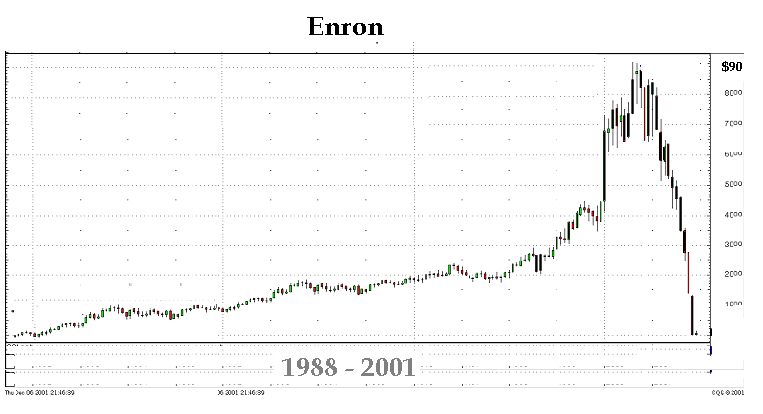
ENRON'S
Robert A. Belfer
Enron Corp.—Robert A. Belfer, 64, chairman and CEO of
Belco Oil & Gas Corp.;

FIRSTROW, FROM LEFT, Ken L.
Harrison, John A. Urquhart,
Robert A. Belfer,
Norman P. Blake, Jr., Robert K. Jaedicke, Ronnie C. Chan, Jeffrey K.
Skilling, Kenneth L. Lay and Wendy L. Gramm. Second Row, from left,
Bruce G. Willison, John H. Duncan, Joe H. Foy, Charls E. Walker, John
Wakeham, Jerome J. Meyer, Herbert S. Winokur, Jr. and Charles A
LeMaistre.
• Robert A. Belfer,
director and member of executive committee: Sold one million shares for
$51 million.
Blind Faith: How
Deregulation and Enron's Influence Over Government Looted Billions from
Americans
http://www.apfn.org/ENRON/Blind_Faith.pdf
ROBERT A. BELFER, FOUNDER OF BELCO OIL & GAS CORP., ELECTED
CHAIRPERSON OF ALBERT EINSTEIN COLLEGE OF MEDICINE’S BOARD OF OVERSEERS
October 25, 2000 --
-- (BRONX,NY) --
Robert A.
Belfer,
founder of Belco
Oil and Gas Corp., has been elected chairperson
of the Board of Overseers of the Albert Einstein College of Medicine of
Yeshiva University.
Mr.
Belfer succeeds Burton P. Resnick, the New York real estate developer, who
served as chairperson of the Einstein Board for the past 19 years. Mr. Resnick
continues on the Board as chairperson emeritus.
A member
of the Einstein Board since 1973, Mr. Belfer has held several leadership
positions including Board treasurer and chairperson of the Budget and Finance
Committee. Mr. Belfer and his wife, Renée—also a member of the Einstein
Board—have established a professorial chair in developmental biology at the
College of Medicine.
Mr.
Belfer is a graduate of Columbia University and the Harvard Law School. After
completing law school, he joined the Belco Petroleum Corp., a Fortune 500
company. He was elected president in 1960 and was named chairman in 1985. This
company subsequently merged into Enron Corp. Seven years later, in 1992, he
founded Belco Oil and Gas Corp., a major independent producer of domestic oil
and gas that is listed on the New York Stock Exchange. He also serves on the
Board of Enron Corp., a leading electricity, natural gas, and communications
company.
He is a
member of the Visiting Committee of the John F. Kennedy School of Government
at Harvard University. He serves on the boards of Weill Medical College of
Cornell University, Weizmann Institute of Science, and the American Jewish
Committee. He is the recipient of an honorary degree from Yeshiva University.
Mr.
Belfer and his wife are deeply involved in promoting better health and
enhancing cultural life. Mrs. Belfer is a member of both the Board of
Directors of Einstein’s National Women’s Division and the executive committee
of its New York Chapter.
Mr. and
Mrs. Belfer have supported major cancer research projects at Memorial Sloan
Kettering Cancer Center in New York City and the Dana Farber Cancer Institute
in Boston. They established the Belfer Center for Science and International
Affairs at Harvard’s Kennedy School of Government, and also named the Robert
and Renée Belfer Court for early Greek art at the Metropolitan Museum of Art
where Mrs. Belfer is a
trustee. She is also a trustee of Lincoln Center for the Performing Arts and
of the American Friends of the Israel Museum.
Mr. and
Mrs. Belfer have three children, Rachelle Malkin, Laurence, and Elizabeth, and
four grandsons.
Albert
Einstein College of Medicine of Yeshiva University is one of the leading
centers for biomedical research and education in the United States. Its
research strengths include cancer, heart disease, diabetes, liver diseases,
immunology, neuroscience, and molecular genetics, among others. It is among
the most selective medical schools in the nation; approximately 7,500
applicants vied for the 180 places in its entering class this year. Einstein’s
hospital affiliates include Montefiore Medical Center, The University Hospital
for the Albert Einstein College of Medicine; Beth Israel Medical Center,
University Hospital and Manhattan Campus for the Albert Einstein College of
Medicine; Long Island Jewish Medical Center, University Hospital and Long
Island Campus for the Albert Einstein College of Medicine; Jacobi Medical
Center and Bronx Lebanon Hospital Center.
http://www.aecom.yu.edu/home/news/belfer.htm
================================================
HARVARD'S The Robert and Renée Belfer Center for Science and International
Affairs
======================================================
$7.5 Million Gift from Belfers Will Refurbish
Center for Science and International Affairs
( TO HARVARD UNIVERSITY)
A generous gift from Renée E. and
Robert A. Belfer, JD '58, to the Kennedy School of Government will greatly
enhance Harvard's capacity to find and promote solutions to problems facing
the international community.
The $7.5 million gift will re-endow
and refurbish the Center for Science and International Affairs, which was
established two decades ago. The expanded Center will be named for the
Belfers to honor their commitment to Harvard and to international security
issues.
http://www.news.harvard.edu/gazette/1997/05.08/75MillionGiftfr.html
=====================================================
Belfer elected chairperson, AECOM's
Board of Overseers
Robert A. Belfer, founder of Belco Oil and Gas Corp., has been elected
chairperson of the Board of Overseers of the Albert Einstein College of
Medicine.
Mr. Belfer succeeds Burton P. Resnick, the New York real estate developer,
who served as chairperson of the Einstein Board for the past 19 years. Mr.
Resnick continues as chairperson emeritus and chairman of the YU Board of
Trustees Executive Committee.
A member of the Einstein Board since 1973, Mr. Belfer has held several
leadership positions including Board treasurer and chairperson of the Budget
and Finance Committee. Mr. Belfer and his wife, RenŽe-also a member of the
Einstein Board-have established a professorial chair in developmental
biology at the College of Medicine. The Belfer family has a long connection
with YU-the tallest building on the Main Campus is named Belfer Hall.
Mr. Belfer is a graduate of
Columbia University and Harvard Law School.
After completing law school,
he joined the Belco Petroleum Corp., a Fortune 500 company. He was elected
president in 1960 and was named chairman in 1985. This company subsequently
merged into Enron Corp. Seven years later, in
1992, he founded Belco Oil and Gas Corp., a major independent producer of
domestic oil and gas that is listed on the New York Stock Exchange. He also
serves on the Board of the Enron Corp., a leading electricity, natural gas,
and communications company.
He is a member of the Visiting Committee of the John F. Kennedy School of
Government at Harvard University. He serves on the boards of Weill Medical
College of Cornell University, Weizmann Institute of Science, and the
American Jewish Committee. He is the recipient of an honorary degree from
Yeshiva University.
Mr. Belfer and his wife are deeply involved in promoting better health and
enhancing cultural life. Mrs. Belfer is a member of both the Board of
Directors of Einstein's National Women's Division and the executive
committee of its New York chapter.
Mr. and Mrs. Belfer have supported major cancer research projects at
Memorial Sloan Kettering Cancer Center in New York City and the Dana Farber
Cancer Institute in Boston. They established the Belfer
Center for Science and International Affairs at Harvard's Kennedy School of
Government, and also named the Robert and RenŽe Belfer Court for early Greek
art at the Metropolitan Museum of Art, where Mrs. Belfer is a trustee. She
is also a trustee of Lincoln Center for the Performing Arts and of the
American Friends of the Israel Museum.
Mr. and Mrs. Belfer have three children, Rachelle Malkin, Laurence, and
Elizabeth, and four grandsons.
http://www.yu.edu/news/yutoday/nov00/belfer.html
==============================================
Enron
Corp.—Robert A. Belfer, 64, chairman and CEO of Belco Oil & Gas Corp.; Norman
P. Blake, Jr., 58, CEO and secretary general of the United States Olympic
Committee; Ronnie C. Chan, 50, chairman of Hang Lung Development Ltd.; John H.
Duncan, 72, private investor; Wendy L. Gramm, 55, director of the Regulatory
Studies Program of the Mercatus Center at George Mason University; Ken L.
Harrison, 57, chairman of the board and CEO of Portland General Electric Co.;
Robert K. Jaedicke, 71, professor emeritus of Accounting at the Stanford
University Graduate School of Business; Kenneth L. Lay, 57, chairman of the
board and CEO; Charles A. Lemaistre, 76, president emeritus of the University
of Texas M.D. Anderson Cancer Center; Rebecca Mark-Jusbasche, 45, former
chairman and CEO of Azurix Corp.; John Mendelsohn, 63, president of the
University of Texas M.D. Anderson Cancer Center; Jerome J. Meyer, 62, chairman
and CEO of Tektronix; Paulo V. Ferraz Pereira, 45, president and COO of
Meridional Financial Group; Frank Savage, 61, chairman of Alliance Capital
Management International; Jeffrey K. Skilling, 46, president and COO; John A.
Urquhart, 71, senior advisor to the Chairman; John Wakeham, 67, retired former
U.K. secretary of state for Energy; Herbert S. Winokur, 56, chairman and CEO
of Capricorn Holdings.
John A. Urquhart Associates
Fairfield, Connecticut. Frank G. Wisner:
American International Group, Inc. New York, New York. ...
http://www.aucegypt.edu/auc/trustees_board/board/board.html
Top Individual Stock Holders
BELFER, ROBERT A., 1.18% (PRX 03-21-2000) Common
Stock
BELFER,
ROBERT A., 17.02% (PRX 03-21-2000) Preferred
Convertible Stock
Office Address: Belco
Petro. Corp. 67 5th
Ave., 46th Fl. New York, New York 10153-0002
Age: 64
Director since 1983 Mr. Belfer's principal occupation is Chairman and Chief
Executive Officer of Belco
Oil &
Gas
Corp., a company formed in
1992. Prior to his resignation in April, 1986 from
Belco
Petroleum Corporation ("BPC"), a wholly owned subsidiary of
Enron,
Mr. Belfer served as President and then Chairman of BPC. (Proxy Statement,
March 21, 2000)
RUBEN, LAWRENCE, JR., ET AL, 1.43% (PRX 03-21-2000)
Common Stock
RUBEN, LAWRENCE, JR., ET AL,
22.06% (PRX 03-21-2000) Preferred Convertible
Stock
Married to Selma Belfer (see above)
Office Address: 600 Madison Ave, New York, NY, 10022-1615
| |
U.S.News Nation & World
2/18/02
'Conflicts come back to bite'
How an Enron director helped fund a deal that
started the death spiral
BY CHRISTOPHER H. SCHMITT
 |
Whether because of investment, consulting, or other business ties to
Enron Corp., the outside
directors of the failed energy giant have come under withering fire
for being too close to the firm they were supposed to oversee.
Now,
there is surprising new fallout from those relationships: A company
controlled by an Enron director, U.S. News has learned, was a
key source of funds for the venture that kicked off Enron's chain of
financial trickery.
Congress continued the Enron ground war last week, chiefly in a House
hearing that featured good theater but shed little light on the
company's collapse. Former Enron chief executive Jeffrey Skilling
confidently asserted he knew of nothing improper in the company's
questionable deals and had no idea Enron was in danger of failing when
he quit last summer. That didn't budge the ill-concealed skepticism of
members of the House energy committee's investigations subcommittee,
who also heard two other Enron executives say they repeatedly tried to
warn Skil-ling about trouble.
Four other current or former
executives claimed their Fifth Amendment right against
self-incrimination.
|
Attention
also focused last week on the role of Enron's board of directors. Corporate
critics have long maintained that directors should not have other
connections to the companies under their control. The latest link, between
Enron and director
Robert Belfer,
offers a vivid demonstration of the consequences of such coziness. It also
suggests that contrary to public statements, Enron's directors could have
been involved with the actual workings of the company's troubled
partnerships. "[It's] just wrong in so many different ways," says Nell Minow,
a longtime shareholder advocate.
Like
everything else about Enron, the connection between
Belfer
and the troubled Enron venture is roundabout, but the essentials are these:
In 1997, Enron formed
a partnership called Chewco Investments.
Named after the woolly Star Wars character, the partnership is
believed to be the first time that Enron executives schemed to inflate
earnings and keep huge amounts of debt off the company's books. Chewco has
been blamed for overstating Enron's profits by $405 million and understating
debt of $2.6 billion.
Chewco's role was to make a $383
million deal involving a partnership between Enron and the mammoth
California Public Employees' Retirement System, or CalPERS.
But shortly before Chewco got off the ground, a hitch developed. Barclays
Bank, the big English financial concern, was poised to lend $240 million to
Chewco. But as the deal was wrapping up, Barclays balked, insisting on
special reserves to protect its investment. Badly needing Barclays to stay
with the deal, Chewco agreed to pony up $6.6 million.
That's where Belfer comes in. In
October 1997, his company, Belco Oil & Gas Corp., agreed to buy Coda Energy
Inc., a Dallas oil and natural gas firm, from the Enron-CalPERS partnership,
of which an Enron affiliate was the lead partner. After the sale, the
partnership, called JEDI (for Joint Energy Development Investment), solved
Chewco's problem with Barclays.
Using money received from
Belfer's
company, JEDI forked over $16.6 million to Chewco, and it was a chunk of
those funds that Chewco used to fund the reserves needed to put itself in
business.
Phantom
profits. The millions
Enron and JEDI received from Belfer's company also figure in another major
strand of the scandal:
Enron's bogus boosting of its
earnings. According to an investigation by an Enron board, Chewco paid
questionable fees to Enron so that Enron–under strong pressure from Wall
Street to keep its earnings rolling–could feed those fees into its profit
calculations. As with
the money used to launch Chewco initially, the source for at least $7
million of those dubious fees was the proceeds from Belco's purchase of Coda
Energy.
One key
question raised by the Coda deal is whether anyone on either side–Belco or
Enron–knew whether the sale proceeds would be channeled into getting Chewco
running or later pumping up Enron earnings. Attorneys for
Belfer
acknowledge the flow of funds but say
Belfer
knew nothing in advance. An Enron spokesman did not respond to a request for
comment. But outside observers were astonished to learn of the sequence.
Patrick McGurn, vice president at Institutional Shareholder Services, says
the maneuvers could be "a foot in the door" showing that Enron directors
were involved in the actual workings of Enron's partnerships, rather than
simply having passively approved them. "The conflicts," he says, "come back
to bite you."
|













